(1626 products available)














































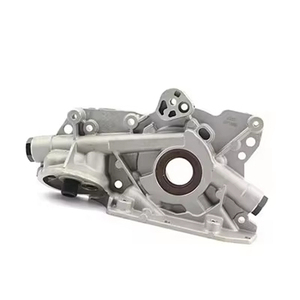



































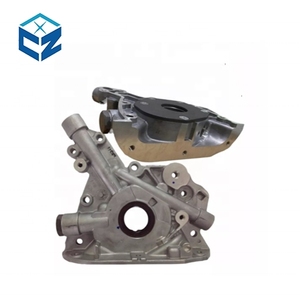
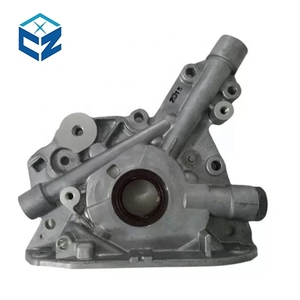
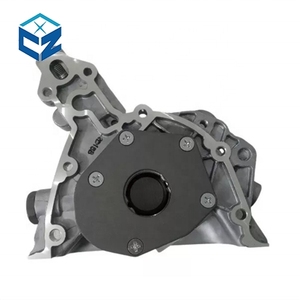



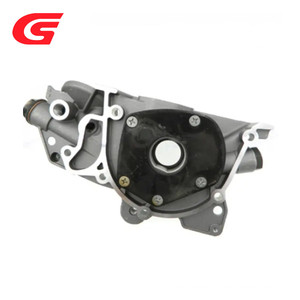





























































A GM oil pump is a component of the lubrication system in vehicles. It pumps oil from the oil pan to the engine parts that need lubrication. By circulating oil, the pump helps reduce friction and wear between engine components, ensuring they last longer and perform better. Oil pumps also help regulate engine temperature by circulating oil. The oil absorbs heat from the engine parts and moves it to the oil cooler or the radiator, where the heat is dissipated. Consequently, oil pumps ensure that all engine parts are cooled evenly, preventing hotspots that could cause engine damage. The pumps also help keep the engine clean by circulating oil and trapping contaminants in the oil filter. There are several types of GM oil pumps, including:
Gear oil pump
This pump uses two gears, a drive gear and a driven gear, to create flow and pressure. As the gears rotate, the oil is trapped between the gears and the pump housing, creating flow. When the gears rotate, they create a low-pressure area that pulls oil into the pump from the oil pan.
Rotary Vane oil pump
This pump consists of a rotor with multiple vanes that rotate in a cylindrical housing. As the rotor turns, the vanes slide in and out of the housing's slots, creating a changing volume that draws oil into the pump and pushes it out. The changing volume in the pump housing creates a suction and discharge action, allowing the pump to move oil.
Gear and rotor oil pump
Combined oil pumps use both gears and a rotary vane mechanism to generate flow and pressure. The drive gear turns in the pump housing, creating flow. At the same time, the rotor with vanes moves the oil through the pump, increasing pressure and ensuring a steady oil supply. The combination of gears and the rotor enhances the pump's efficiency and performance.
Crankshaft oil pump
This is a positive displacement oil pump driven by the crankshaft of a vehicle's internal combustion engine. The pump's flow rate is proportional to the crankshaft speed. Generally, the flow output of a crankshaft oil pump is constant, and the pressure is constant regardless of the crankshaft speed. As a result, the oil pump crankshaft requires an external pressure relief valve to maintain oil pressure.
Electric oil pump
The electric oil pump is powered by the vehicle's electrical system. This oil pump is highly efficient because the flow rate and pressure are adjustable according to the engine's operating conditions. Generally, the electric oil pump requires a pressure relief valve to maintain the oil pressure in the system.
The specification of the oil pump depends on several factors, including the make and model of the vehicle, the engine type and size, and the manufacturer's design. Here are some common specifications for the oil pump:
Flow rate
The flow rate of the oil pump is a measure of how much oil the pump can move in a given amount of time. This is usually measured in liters per minute (LPM) or gallons per minute (GPM). The flow rate needs to be compatible with the needs of the engine to guarantee effective lubrication.
Pressure
The oil pump generates a specific pressure level to ensure the oil flows through the engine's parts and moves smoothly. The pressure is usually measured in pounds per square inch (PSI) or pascals (Pa). The pressure specifications of the oil pump should match the engine's requirements to maintain proper oil circulation.
Design and construction
Oil pumps are designed and constructed using different materials based on the engine's specifications. The oil pump is mainly constructed using durable materials, such as steel or cast iron, which can withstand the stress and wear of the engine's operation.
Electric oil pump voltage and power
The voltage and power of an electric oil pump are determined by the type of oil pump used. For instance, electric oil pumps use a specific voltage and power to operate. The voltage is typically 12V, and the power is between 50-100W.
Maintaining the oil pump is very important in order to keep the vehicle in good condition. Here are some maintenance tips:
Choosing the right oil pump is vital for maintaining a healthy engine. Here are some factors and tips to consider when choosing an oil pump.
Engine Requirements
Before anything else, consider the needs of the engine. The owners of small cars will use a pump with a standard flow rate. However, those with large or modified engines will require a higher flow rate. The higher flow rate will ensure that the oil reaches all parts of the engine, even under heavy strain.
Quality and Reliability
It is advisable to go for quality oil pumps. Quality oil pumps provide dependable performance and durability. Pumps from reputable brands may be a bit costly, but they are worth it in the long run. One is guaranteed of quality and reliability. One should be very careful when choosing an oil pump because inferior pumps may lead to engine damage.
Compatibility
Ensure that the oil pump to be purchased is compatible with the oil system of the intended vehicle. The oil pump should be able to work well with the existing oil routes and the oil filter system.
Installation
Consider the ease of installing the oil pump. It is advisable to go for an oil pump that is easy to install. Also, consider whether it is possible to install the oil pump without special tools or modifications.
Cost
Consider the budget. Quality oil pumps are available at different price points. It is advisable to shop around and find an oil pump that is compatible with the budget.
Warranty and Support
Look for an oil pump that has a warranty. A warranty is a sign of quality. Also, consider the customer support of the manufacturer in case of any inquiries or assistance needs.
The oil pump is an important part of the engine. It pumps oil and circulates it through the engine parts to lubricate and protect them from wear. Without oil, the engine parts rub against each other, leading to damage. Replacing the oil pump is a complicated task that requires prior knowledge of engines and their parts. Here are the steps to take when replacing the oil pump:
Q1. How Long Does an Oil Pump Last?
A1. An oil pump does not have a specific time frame for replacement. Generally, the oil pump can last for the entire life of the vehicle, which is around 10 to 15 years. However, the longevity of the oil pump depends on several factors. These factors include the quality of the oil pump, the type of vehicle, the driving conditions, and the maintenance of the oil pump.
Q2. What Causes Oil Pump to Fail?
A2. There are several causes of oil pump failure. One of the causes is wear and tear, which is a natural cause that occurs over time. Other causes include damage to the oil pump, contamination, or low oil level.
Q3. Can the Oil Pump be Repaired?
A3. Oil pumps cannot be repaired. The only solution to a damaged oil pump is replacement.